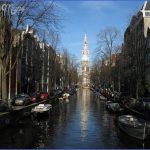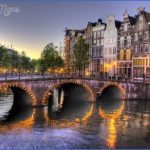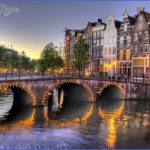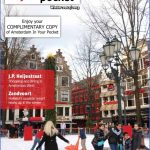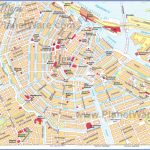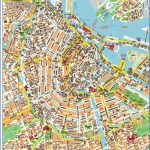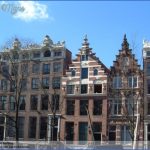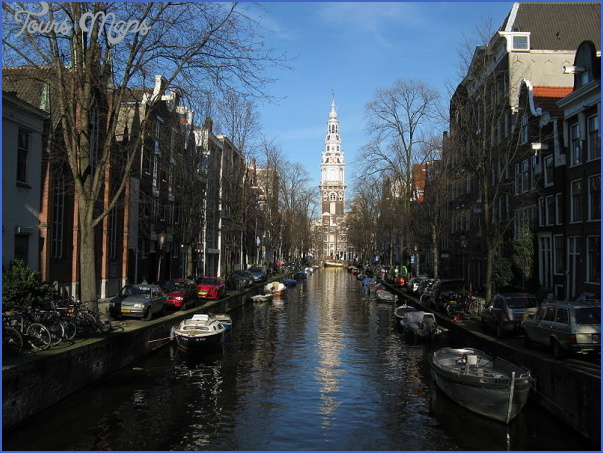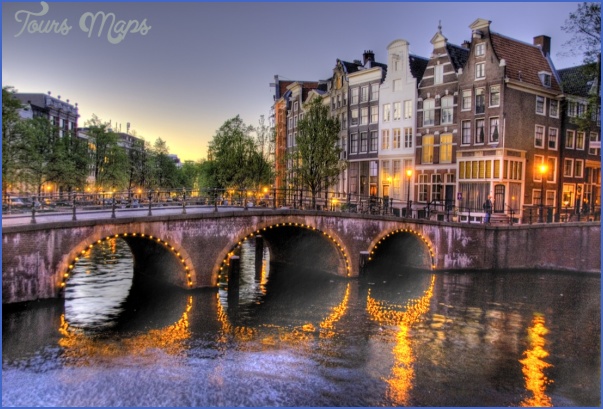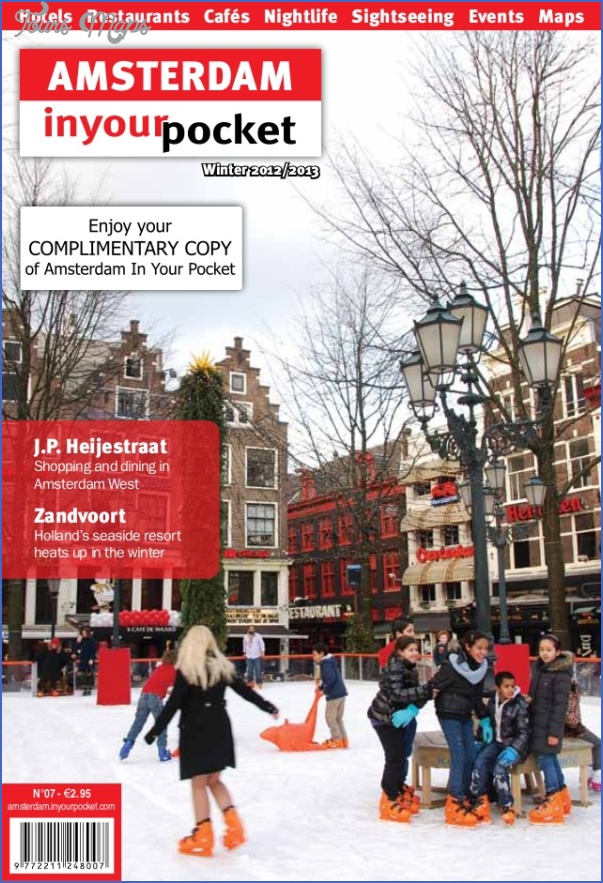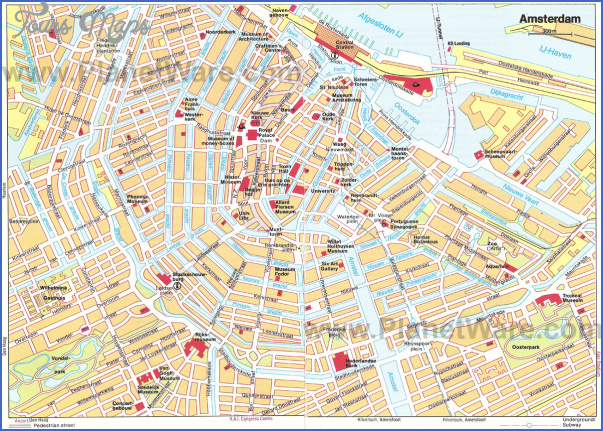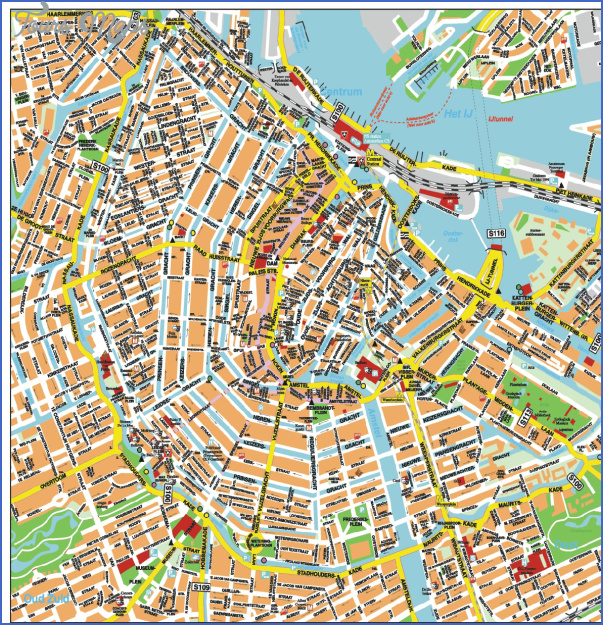Amsterdam Guide for Tourist
SIGHTS
Amsterdam is fairly compact, so tourists can easily explore the area from the Rijksmuseum to the Red Light District on foot. For those not inclined to pedestrian navigation, the tram system will get you to any of the city’s major sights within minutes from any destination (770). For a peaceful trip, Museumboot Canal Cruise allows you to hop on and off along its loop from the VVV to the Anne Frank Huis, the Bloemenmarkt, the Rijksmuseum, Waterloopl. and the old shipyard. (Every 30min. Day ticket ‚14.30; ‚12.50 after 1pm.)
OUDE ZIJD, THE RED LIGHT DISTRICT, AND NIEUWE ZIJD
THE RED LIGHT DISTRICT. No trip to Amsterdam would be complete without witnessing the notorious spectacle that is the Red Light District. After dark, the area actually takes on a red radiance sex theaters throw open their doors, and the main streets are thick with people gawking at the unabashed openness of the window prostitutes; Warmoesstraat and Oudezijds Achterburgwal boast wall-to-wall brothels. There are also sex shows, in which actors perform strictly choreographed fantasies on stage for lhr.; the most famous live sex show takes place at Casa Rosso, Oudezyds Achterburgwal 106-108, where ‚25 will buy you admission to 8 or 9 consecutive acts and complimentary drinks. The Casa’s marble penis fountain across from the theater is the Red Light District’s most recognizable landmark. ( 627 89 54; www.janot.com. Open daily M-Th 8pm-2am, F-Sa 8pm-3am.)
BEGIJNHOF. You don’t have to take vows to enter this secluded courtyard the 14th-century home of the Beguines, a sect of religiously devoted laywomen but you will have to get up early. Begynhofs peaceful, rose-lined gardens, beautifully manicured lawns, and tree-lined walkways afford a much-needed respite from the bustling excesses of the Nieuwe Zijd. The oldest house in Amsterdam, Het Houten Huys (The Wooden House), is located on the premises. (Open July-Aug. daily 8-1 lam; Sept.-May 9am-5pm. Free. Het Houten Huys 623 55 54. Open M-F 8-10am. Free.)
To see Amsterdam as locals do, spend a day on bike. The nicest biking routes are those that run through through the canal districts; places toward the center of town (especially congested pedestrian walkways near the Red light District) should always be avoided. Our tour starts and ends at Frederic Rent a Bike, Brouwersgr. 78; for more info, see 770.
Start off by biking down Prinsengracht. Turn left onto Reestraat, which becomes Hartenstraat and Gasthuls-molensteeg. Continue over the Singel to Dam Square.
DAM SQUARE. Amsterdam’s central square is surrounded by the Nieuwe Kerk, Nationaal Monument, and Koninklijk Paleis, home to the Dutch royal family. Stop and check out the street performers in good weather.
BSPUI. Head back towards Singel, turn left on Nieu-wezijds Voorburgwal and go south for a few minutes to arrive at Spui. The square is home to a Sunday art market, a Friday book market, and is surrounded by bookstores. If you’re up early, head into the Begijnhof (779), the peaceful residence for observant lay-women. Ride back to the Western Canal Ring via Heistraat. Turn left onto Herengracht and right onto Leidsegracht; the beautiful intersection of the Leidsegracht and Keizers-gracht canals is definitely worth a lenghty pause.
APPEL. Continue down Leidsegracht, turn left at Keizersgracht, and left on Nieuwe Spiegelstraat. Stop at Nieuwe Spiegelstr. 10 to tour Amsterdam’s premier space for contemporary art. (787).
GOLDEN BEND. After some art-gazing, head over to the stretch of Herengracht between Leidsestraat and Vij-zelstraat, known as the Golden Bend because of its opulent houses. Officials bent the strict house-width rules for wealthy citizens who were willing to invest in the construction of the Herengracht, or gentleman’s canal.
MAGERE BRUG. Turn right at Utrechtsestraat and then left at Prinsengracht. Continue until you hit the Amstel river and turn left; the Magere Brug (skinny bridge) is on your right. This is the oldest of the city’s pedestrian bridges and the only one operated by hand. 0NIEUWMARKT. Cross the bridge, turn left, and head north along the Amstel, crossing the bridge at Herengracht. Veer left on the path, go right around the far side of the Stadhuis, and cross the bridge at Staal-straat. When you hit Groenburgwal, turn right, make another right again at Raamgracht, and then left at the first bridge. Cross over, turn left and double back along the far side of Raamgracht. Turn right at Klove-niersburgwal and follow it to Nieuwmarkt, an open-air market on weekends and home to the Waag, Amsterdam’s largest surviving medieval building (782). Head back to Frederic’s via Zeedijk, which turns into Prins Hendrikkade and passes Centraal Station.
OUDE KERK. The old church may come as a welcome, wholesome shock, smack in the middle of the otherwise lurid Red Light District. Oude Kerk is a stunning structure, with an enormous interior and magnificent stained-glass windows. The earliest parish church built in Amsterdam, it is now a center for cultural activities, hosting photography and modem art exhibitions. At the head of the church is the massive Vater-Miiller organ, which was built in 1724 and is still played for public concerts. (Oudekerkspl. 23. s625 82 84; www.oudekerk.nl. Open M-Sa llam-5pm, Su l-5pm. ‚4, students ‚3. Additional admission for exhibitions.)
NIEUWMARKT. On the border between the Oude Zijd and the Jodenbuurt, Nieuw-markt is worth a visit simply to take a look at the Waag, Amsterdam’s largest surviving medieval building. Dating from the 15th century, the Waag was one of Amsterdam’s fortified city gates and later housed the Surgeons Guild’s amphi-teater. Public dissections and private anatomy lessons were once held there, as Rembrandt’s The Anatomy Lesson of Dr. Tulp famously depicts.
DAM SQUARE AND KONINKLIJK PALEIS. The Koninklijk Paleis (Royal Palace) was completed in 1655 and functioned as the town hall until Louis Napoleon had it renovated and remodeled in 1808 to better serve the function of a royal residence. Today Queen Beatrix still uses the building for official receptions though she makes her home in The Hague. The palace’s indisputable highlight is the Citizen’s Hall, designed to replicate the universe in a single room. Across the large Dam Square is the Dutch Nationaal Monument, unveiled on May 4,1956, to honor Dutch victims of WWII. Inside the 21m white stone obelisk is soil from all twelve of Holland’s provinces as well as from the Dutch East Indies. (Koninklijk Paleis s 620 40 60; www.kon-paleisamsterdam.nl. Palace open June-Aug. daily 12:30-5pm; off-season hours \ary. ‚4.50, children and seniors ‚3.60. Under-6 free.)
SINT NICOLAASKERK. A burst of color emanates from the stained-glass windows over the impressive columned altar of the otherwise forbidding, gray Sint Nico-laaskerk. Erected by AC. Bleys and completed in 1887 to honor the patron saint of sailors, it replaced a number of Amsterdam’s secret Catholic churches from the era of the Alteration. Designed in the neo-Baroque style, the structure houses stem black marble columns, a domed ceiling, and wooden vaults. (Prins Henrikkade 73. 624 87 49. Open M l-4pm, Tu-Fllam-4pm, Sa noon-3pm. Su mass at 10:30am. Free.)
Pronounced spow, this tree-lined, cobblestoned square south of the Begijn-hof is perfect for quiet lounging on summer afternoons. Spui is home to an art market on Sundays, a book market on Fridays, and is surrounded by bookstores. Look out for Het Lievertje (The Little Urchin), a small bronze statue by Carel Kneulman that became a symbol for the Dutch civil action group, the Provos, and was the site of many meetings and riots in the 1960s. (Tram #4, 9, 14, 16, 20, 24, or 25 to Spui.)
Amsterdam Guide for Tourist Photo Gallery
Maybe You Like Them Too
- Explore Góra Kalwaria, Poland with this detailed map
- Explore Gumdag, Turkmenistan with this detailed map
- Explore Telfes im Stubai, Austria with this detailed map
- Explore Langenselbold, Germany with this detailed map
- Explore Krotoszyn, Poland with this detailed map

